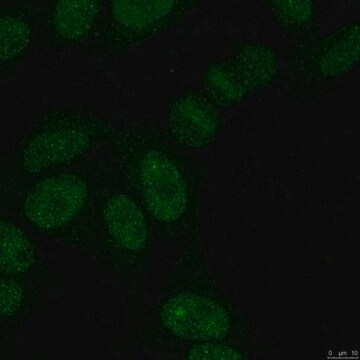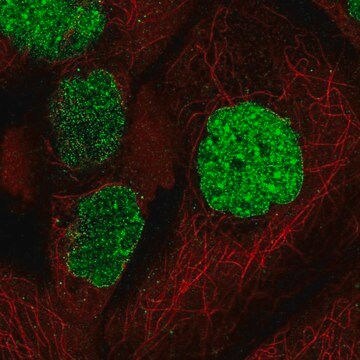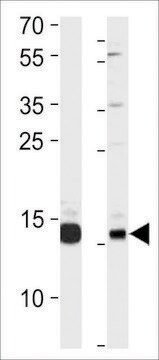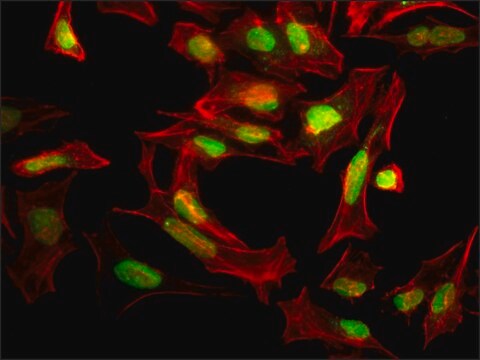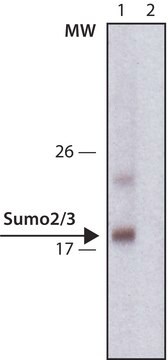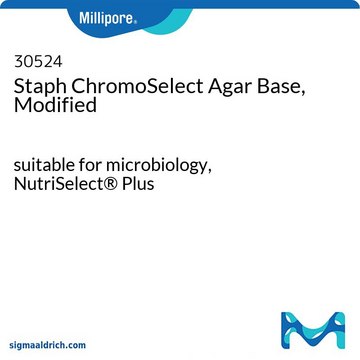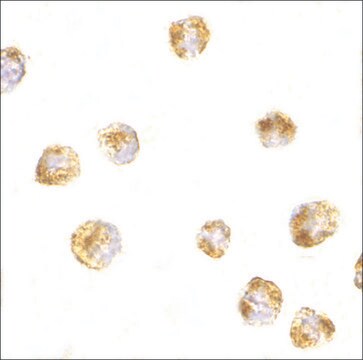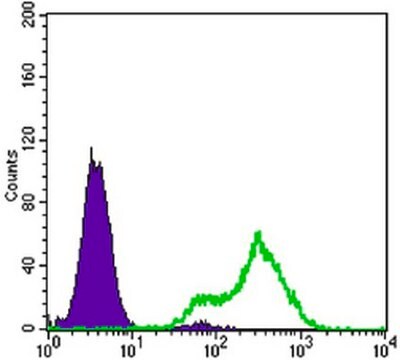07-2167
SUMO 2/3抗体
from rabbit, purified by affinity chromatography
同義詞:
SMT3 suppressor of mif two 3 homolog 2 (S. cerevisiae), Ubiquitin-like protein SMT3B, SMT3 homolog 2, SMT3 (suppressor of mif two 3, yeast) homolog 2, SMT3 suppressor of mif two 3 homolog 2 (yeast), small ubiquitin-related modifier 2, small ubiquitin-lik
About This Item
推薦產品
生物源
rabbit
品質等級
抗體產品種類
primary antibodies
無性繁殖
polyclonal
純化經由
affinity chromatography
物種活性
pig, human, mouse, rat
物種活性(以同源性預測)
bovine (based on 100% sequence homology), porcine (based on 100% sequence homology), rhesus macaque (based on 100% sequence homology), opossum (based on 100% sequence homology), chimpanzee (based on 100% sequence homology)
技術
immunoprecipitation (IP): suitable
western blot: suitable
UniProt登錄號
運輸包裝
wet ice
目標翻譯後修改
unmodified
基因資訊
human ... SUMO2(6613)
mouse ... Sumo2(170930)
opossum ... Sumo2(123244757)
rat ... Sumo2(690244)
一般說明
特異性
免疫原
應用
泛素 & 泛素代谢
信号传导
免疫沉淀分析:先前批次已被独立实验室用于IP。(Li, T., et al. (2006).The Journal of Biological Chemistry.281(47):36221-36227.)
品質
蛋白质印迹分析:1 µg/mL的该抗体在10 µg HeLa核提取物中检测到SUMO 2/3 。
標靶描述
外觀
儲存和穩定性
分析報告
HeLa核提取物
其他說明
免責聲明
未找到適合的產品?
試用我們的產品選擇工具.
儲存類別代碼
12 - Non Combustible Liquids
水污染物質分類(WGK)
WGK 1
閃點(°F)
Not applicable
閃點(°C)
Not applicable
分析證明 (COA)
輸入產品批次/批號來搜索 分析證明 (COA)。在產品’s標籤上找到批次和批號,寫有 ‘Lot’或‘Batch’.。
我們的科學家團隊在所有研究領域都有豐富的經驗,包括生命科學、材料科學、化學合成、色譜、分析等.
聯絡技術服務